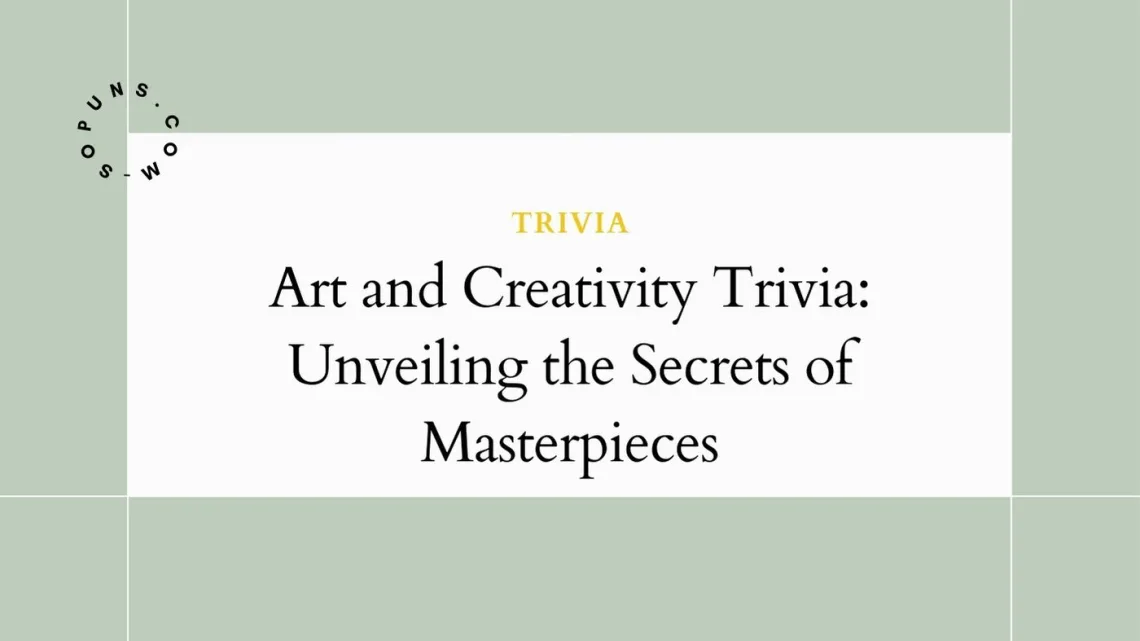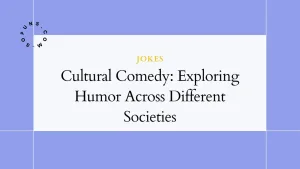Art and creativity have captivated humanity across cultures and eras. Behind every great masterpiece lies a fascinating story waiting to be uncovered. While art trivia enlightens us about the muses, inspirations, and techniques of renowned creators, creativity trivia reveals the ingenuity behind innovations that shape our world. Let’s indulge our curiosity and dive into this enchanting realm!
Illuminating Facts About Legendary Artists and Their Inspirations
The quirks and inspirations of iconic artists are often reflected in their groundbreaking works. Did you know Vincent Van Gogh licked his paintings to add texture? Or that Salvador Dali’s famous melted clocks were inspired by Camembert cheese? Art trivia opens our eyes to the humanity behind artistic genius.
Take Leonardo da Vinci, for instance. His SFUMATO technique, which blurred outlines to create smoky, atmospheric effects, emerged from his fascination with smoke. The Mona Lisa’s tantalizing smile hints at da Vinci’s passion for riddles and puzzles.
Then there’s Claude Monet, whose loose, broken brushstrokes captured the fleeting effects of light – perhaps a reflection of his great love for gardening and nature. Edvard Munch’s iconic The Scream, meanwhile, externalized his own anxiety and mental anguish onto the canvas.
These snippets of trivia add depth, letting us connect profoundly with creative icons. We see how their quirks, emotions, and life experiences manifest in their epoch-making art.
Obscure Facts About Famous Masterpieces and Their Creators
Look closer at any famous painting or sculpture, and you’ll uncover surprises. Take Michelangelo’s David, the ultimate Renaissance man. Did you know Michelangelo deliberately depicted David before his battle with Goliath, highlighting David’s courage and focused determination? Or that the statue contains a hidden musical cue – the veins in David’s outstretched hand form musical notes!
Vermeer’s Girl with a Pearl Earring also contains mysteries. The girl is anonymous, yet her luminous, pearl-like gaze draws us magnetically. Speculations abound regarding the pearl’s significance – does it hint at the girl’s purity, or mark her as a royal mistress? We may never know Vermeer’s true intentions.
These obscure details humanize great artworks, revealing snippets of their creation story. They transform a masterpiece from a dusty artifact into a vivid window into a long-lost world.
How Iconic Art Movements Shaped History
Art trivia also illuminates the revolutions in artistic movements. For instance, Impressionism – pioneered by Monet, Renoir, and Degas – shattered conventions by capturing fleeting impressions of light and color instead of precise details. The Post-Impressionists went further – Van Gogh’s swirling, emotive brushstrokes exposed his inner turmoils to evoke moods and ideas.
The 20th century sparked yet more radical shifts. Picasso and Braque’s Cubism fragmented familiar objects and rearranged their parts, mirroring the disorienting pace of modernity. Surrealism tapped the uncharted depths of the subconscious – Salvador Dali fused objects like clocks and stones in perplexing dreamscapes.
Understanding how each art movement rebelled against the past gives us insight into their cultural impact. Impressionism’s loose strokes defied the rules of academic art. Cubism shattered the Renaissance perspective. We also start to see how artistic ingenuity shapes our view of life.
Enriching Museum Visits and Exhibitions with Trivia
Armed with art trivia, visiting museums becomes far more rewarding. We no longer see rooms full of disparate paintings – instead, everything comes alive with context.

For instance, at the National Gallery in London, we marvel at how the Impressionists’ blotchy style went against expectations of photorealism. At the Met in New York, we find Jackson Pollock’s paint splatters less chaotic, knowing they were a bold act of creative freedom.
Having a narrative thread enhances our experience exponentially. We perceive each work not in isolation, but as part of an interwoven cultural heritage. From pioneering strokes to scandalous subject matter, we start to grasp how each innovation added to the vocabulary of art.
Trivia Sparking Reflections on Artistic Interpretation
Art trivia also challenges us to rethink our assumptions about great works. Take Edouard Manet’s Le Dejeuner sur l’herbe, an 1863 painting depicting a naked woman picnicking with two clothed men. The painting was utterly scandalous in its time.
But its meaning transforms based on context – it referenced art history, subtly satirizing classic nudes. We’re prompted to question our initial reactions – how is nudity and sexuality perceived across different eras? Trivia about a painting’s mysteries or controversies makes us re-examine our interpretations.
There are often no right answers in art. Trivia opens up conversations about an artwork’s intent, meaning, and significance. We ponder why Mona Lisa’s smile intrigues us so. We reflect on what Dali wanted to express through his melting watches. In the process, we confront our own fascinations, assumptions, and blind spots.
Fostering Artistic Expression Through Creativity Trivia
Beyond fine art, creativity trivia also unveils moments of genius that advanced human civilization. Understanding the stories behind innovations stimulates our own creativity.
Take Johannes Gutenberg, who pioneered movable type printing and gave rise to mass communication. Or Orville and Wilbur Wright, whose obsession with flight led to the first powered aircraft. Learning how everyday curiosity fueled these breakthroughs is deeply inspiring.
Creativity trivia also reveals brilliant adaptations of existing tools. Croatian inventor Slavoljub Eduard Penkala adapted the then-novel ballpoint pen into a mechanical pencil – sparking new writing possibilities. Trivia on improvising with available resources motivates us to experiment playfully. Discovering how creativity blossomed in different domains spurs us to explore our own.
Appreciating Our Shared Ingenuity Through Trivia
Above all, art and creativity trivia illuminates the astonishing expanse of our collective imagination. Details about artistic revolutions reveal how human creativity perpetually reinvents our world. Stories of everyday curiosities leading to innovation show our boundless ingenuity.
Trivia breathes life into dusty historical facts, unveiling these as moments of remarkable human enterprise. Masterpieces are no longer distant – we intimately know their origins and creators’ visions. Inventions are no longer just functional tools – we appreciate the long creative journey behind them.
Immersing ourselves in art and creativity trivia allows us to step into the shoes of our ancestors across millennia and cultures. We connect profoundly with past innovators who shaped the fabric of human civilization. Trivia becomes a powerful window into both the diversity and universality of human curiosity and imagination.
Frequently Asked Questions About Art and Creativity Trivia
Why is art and creativity trivia significant?
Art and creativity trivia allow us to engage more deeply with creative works. Obscure details add missing context, bringing static art or inventions to life. We gain vivid insights into creators’ lives, inspirations, and intentions. This transforms our emotional experience – we see masterpieces and innovations as the product of people’s dreams, passions, and struggles.
How does art trivia create an emotional connection to masterpieces?
By unveiling the personal stories and quirks behind iconic art, trivia forges an emotional bond. We get glimpses into Van Gogh’s mental state through his turbulent brushstrokes, and Frida Kahlo’s pain through her surreal visual metaphors. Their art becomes an extension of their lives and personalities. This makes masterpieces profoundly relatable – we begin to see creators’ human experiences manifested on the canvas.
What role does art trivia play in understanding art movements?
Art trivia puts art movements in a historical context, revealing how artists rebelled against artistic conventions. We appreciate Impressionism more knowing how its style defied academic rules. Dada’s absurdity carries more meaning when seen as a reaction to war. Trivia lets us grasp the philosophy driving groundbreaking styles. We understand how art chronicles cultural change.
How can obscure facts inspire our own creativity?
Learning how mundane curiosities sparked world-changing innovations shows creativity can spring from anywhere. Stories of improvisations leading to major advances reveal resourcefulness and imagination. This inspires us to experiment playfully, pursue ideas, and be open to happy accidents. Immersing ourselves in tales of human ingenuity compels us to unlock our own.
How does art trivia encourage different interpretations of artworks?
Intriguing trivia about a work’s controversial backstory prompts us to re-examine our assumptions and reactions. We’re compelled to question whether our judgment of a nude painting as obscene says more about us or the artist’s intent. Our views evolve as we ponder contrasting interpretations. This adds nuance, showing how art evokes an endless diversity of meanings.
Conclusion
The world of art and creativity trivia offers endless fascination that both educates and inspires us. Illuminating details about legendary artists reveal how life experiences manifest in pioneering artworks that both shocked and shaped society. Obscure facts add intrigue to iconic masterpieces, inviting us to reinterpret them. Understanding artistic revolutions gives deeper resonance to movements that redefined culture and perception. Immersing ourselves in tales of human ingenuity compels us to nurture our own.
Above all, art and creativity trivia weaves a rich tapestry of our shared cultural heritage. Anecdotes breathe life into paintings, sculptures, and inventions – these become tangible products of people’s imagination and vision. As we connect profoundly with our ancestors’ dreams and struggles, we find commonality despite the gulfs of time and context. We realize that beyond culture, we all share the innately human desire to create, express, and learn. Trivia illuminates both the diversity and universality of human creativity across the ages.






No Comments